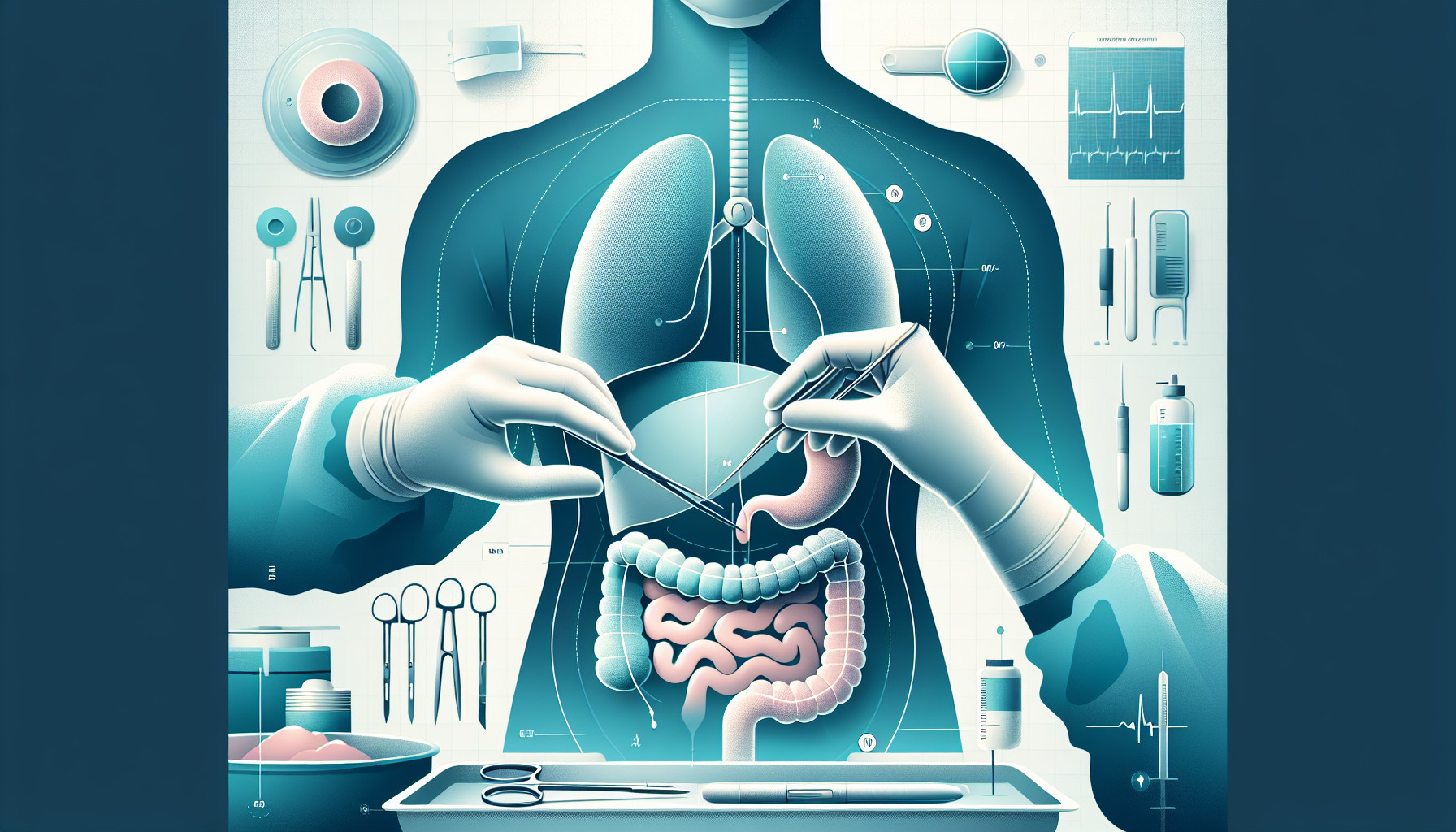Our Summary
This research paper discusses a less invasive way to repair a hiatal hernia, which is a condition where part of your stomach pushes through your diaphragm into your chest. The common method for fixing this is through a minimally invasive surgery, but this paper suggests using a robotic platform for the procedure. The robot-assisted surgery follows several steps and has similar results to the traditional minimally invasive surgery. The paper also discusses current debates, limitations, and new technologies related to this type of surgery.
FAQs
- What is the new method proposed for hiatal hernia repair in the research paper?
- How does the robot-assisted surgery compare to the traditional minimally invasive surgery in terms of results?
- What are some of the current debates and limitations related to robot-assisted hiatal hernia repair?
Doctor’s Tip
One helpful tip a doctor might tell a patient about hiatal hernia repair using a robotic platform is to ensure they follow all pre-operative instructions carefully, such as fasting before surgery and avoiding certain medications that may increase the risk of complications. Additionally, it is important for patients to communicate any concerns or questions they may have with their healthcare provider before undergoing the procedure. Following post-operative care instructions, such as proper wound care and avoiding strenuous activities, can also help promote a successful recovery.
Suitable For
Patients who are typically recommended for hiatal hernia repair are those who experience symptoms such as frequent heartburn, chest pain, difficulty swallowing, regurgitation of food or liquids, and feeling full after eating only a small amount. These symptoms can be caused by the hernia allowing acid to back up into the esophagus, leading to gastroesophageal reflux disease (GERD).
Patients with a hiatal hernia that is causing severe symptoms or complications such as bleeding, ulcers, or narrowing of the esophagus may also be recommended for surgery. Additionally, patients who do not respond well to medications or lifestyle changes to manage their symptoms may be candidates for surgical repair.
It is important for patients to discuss their symptoms and treatment options with a healthcare provider to determine if hiatal hernia repair is the best course of action for their individual situation.
Timeline
Before hiatal hernia repair:
- Patient experiences symptoms such as heartburn, chest pain, difficulty swallowing, and regurgitation of food.
- Patient undergoes diagnostic tests such as endoscopy, barium swallow, and pH monitoring to confirm the presence of a hiatal hernia.
- Patient may be prescribed medications to manage symptoms and lifestyle changes such as diet modifications and weight loss.
After hiatal hernia repair:
- Patient undergoes pre-operative evaluations and consultations with the surgical team to discuss the procedure and potential risks.
- Patient undergoes the hiatal hernia repair surgery using a robotic platform, which involves making small incisions in the abdomen, inserting a camera and surgical instruments, and repairing the hernia.
- Patient is monitored post-operatively for complications such as infection, bleeding, or hernia recurrence.
- Patient undergoes follow-up appointments to assess recovery and ensure the success of the surgery.
- Patient may experience improvements in symptoms such as reduced heartburn, improved swallowing, and decreased regurgitation of food.
What to Ask Your Doctor
What are the benefits of using a robotic platform for hiatal hernia repair compared to traditional minimally invasive surgery?
What are the potential risks and complications associated with robot-assisted hiatal hernia repair?
How does the recovery time and post-operative pain compare between robotic hiatal hernia repair and traditional surgery?
Are there any specific criteria or factors that make a patient a good candidate for robot-assisted hiatal hernia repair?
What is the success rate of robot-assisted hiatal hernia repair in terms of long-term outcomes and symptom improvement?
How does the cost of robot-assisted hiatal hernia repair compare to traditional surgery, and will insurance typically cover this procedure?
Are there any specific lifestyle changes or precautions that need to be taken after undergoing robot-assisted hiatal hernia repair?
How experienced is the medical team with performing robot-assisted hiatal hernia repair, and what is their success rate with this procedure?
Are there any alternative treatment options for hiatal hernia repair that should be considered before opting for robot-assisted surgery?
What is the follow-up care and monitoring process like after robot-assisted hiatal hernia repair, and what should the patient expect in terms of long-term follow-up appointments and assessments?
Reference
Authors: McClinton A, Zarnegar R, Dakin G, Afaneh C. Journal: Surg Clin North Am. 2025 Feb;105(1):125-142. doi: 10.1016/j.suc.2024.06.010. Epub 2024 Sep 6. PMID: 39523068
